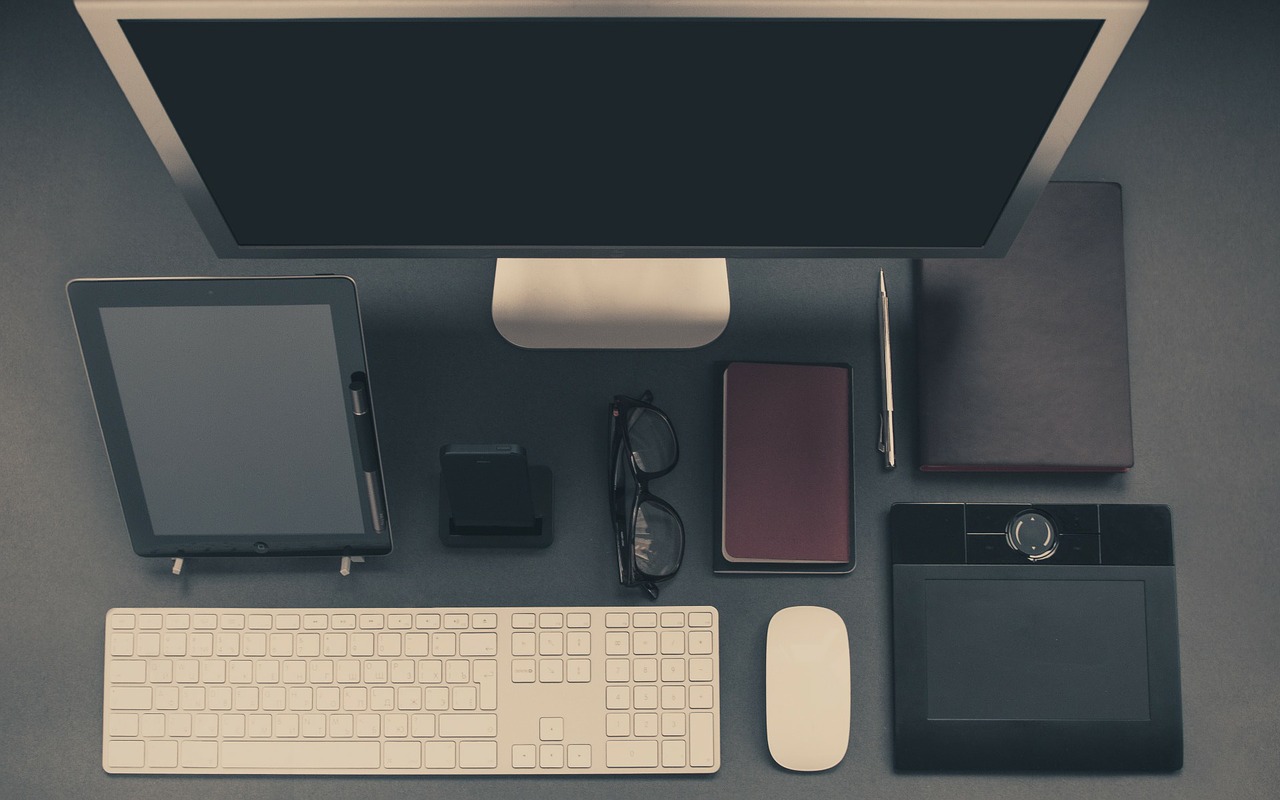Old magazines – check. Half-empty coffee cups – check. Complex maze of wires – check. Anything we forgot? Oh, how about some random paper clips, sales brochures, other people’s pens and maybe some pet toys thrown in for good measure? Now we have the perfect formula for a cluttered desk. Which some people claim is a sign of genius. But for everyone else who’s sick of never being able to find anything and/or just sick of the mess, read on for our top tips on keeping your desk tidy and workspace clean.
1) Remember that it’s a work space, not a living space

Your workspace should be reserved for work. This means that anything non-work related has no place there. Temporary guests like delivery parcels, magazines, or the dog’s chew toy often find shelter here because you’re busy, and there’s nowhere else to put them right now, but somehow they always seem to take up permanent residence.
So, to avoid non-work clutter from taking over, the best practice is to deal with the thing immediately – open the parcel and store the contents in their permanent home, read the magazine and throw it in the recycle bin, and ask Mr Fluffypants to take his toy out into the garden. If this isn’t feasible right now, then do all these at the end of every work day. This way, you won’t let stuff accumulate on your nice clean desk.
2) Keep personal stuff to a minimum

Photo frames of loved ones, mini replicas of the Millenium Falcon, or a couple of cacti make your workspace more personal and comfortable, but avoid overcrowding. You don’t need the entire cast of Star Wars, just Han (or Kylo, if the dark force is strong in you). You don’t need all the cousins and extended cousins, just your close family. You don’t need an entire garden, just a bit of greenery.
If you’re working from home, you can also spread out personal effects, instead of having everything on your desk. Photos can be mounted on walls, so they’re in sight, but out of the way. Plants and other things can be displayed on shelves. Basically, you want most things within arm’s length to be work-related. This is more efficient, and cuts down on distractions.
3) Do the dishes

While you’re working, you might be drinking multiple cups of tea (or the recommended 2L of water a day), ordering a sandwich, nibbling on biscuits or assorted nuts etc. Fueling your body throughout the workday is vital, but what isn’t vital is letting the dishes, wrappers, and empty cartons and boxes sit around. While you should respect the Flow (more on this in this blog) when you’re on a productive or creative roll, you’ll naturally find that after awhile, your body is tired and wants a break. Instead of trying to push through this natural rest period, get up, stretch, throw empty wrappers and boxes away, and take a stroll to the kitchen to do the dishes.
Research has proven that rest periods do wonders for both your health and productivity. Resting resets your energy levels and improves concentration and mood. Light physical activity during these rest periods are even better. And if you get a tidy desk, and clean dishes out of the deal too, it’s a win on every front.
Nothing looks and feels as unprofessional as a workspace littered with old food and food containers, so make a habit of cleaning up after every meal or snack.
4) Tidy up the wires

While wireless technology is becoming better and more affordable, their wired counterparts are still more reliable and ubiquitous. Which means most workstations are a tricky maze of overlapping wires and connections. Instead of letting wires trail willy-nilly over your limited workspace, consider tidying them up (great tips here). Also place wiring as out of the way as possible, behind the desk or the screen, for example. Extension cords can often be tucked under a carpet or nailed against walls, so they’re not trailing on the floor ready to trip up an unsuspecting human or dog person.
5) Go paperless

Many offices unthinkingly print masses of paper, even though most documents can be thoroughly dealt with digitally. This is terrible for the environment, and for keeping your workspace tidy.
Think before you print. And if you do have to print, know where the physical printout needs to go after you’ve handled it. Does it need to be filed (aren’t digital files safer, and more cost and space efficient?), does it need to be handed over to someone (how do they live without email?), or does it need to be recycled?
If you find doodling helps you think, you could gather up a small pile of previously-important printouts into a doodle pad. This at least keeps them all in one place and not free-floating around your desk. Recycle when you’re done.
6) Set yourself up for success the next day

At the end of each workday, you should symbolically ‘close up shop’. This signals to your brain that you’re done working for the day. Just like a restaurant clears all the tables and wipes down the kitchen before everyone goes home, you can save or archive files, throw out trash, and clear up your desk. These simple acts give you a clear break between working and living (even if you work from home). It also sets you up for success the next day, because you’ll return to a clean and orderly workspace, which lets you get started right away on the day’s work.
If you already have a tidy workspace – congratulations. If you don’t, try applying the tips we’ve discussed above. If you need more help, match with someone who can help you get organised on Kalido. And for more tips on how to declutter your life, check out the email edition and wardrobe edition blogs.

